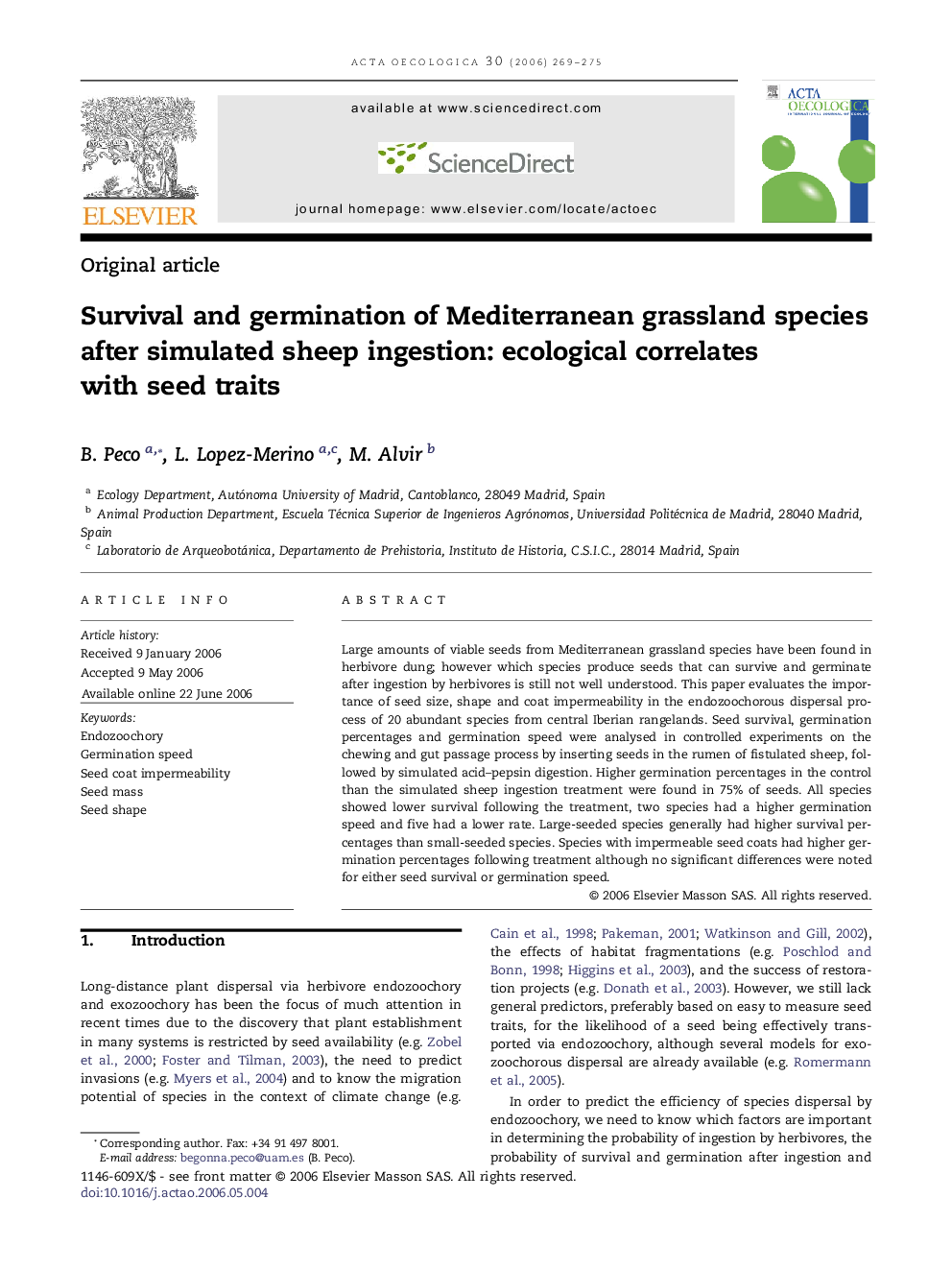| Article ID | Journal | Published Year | Pages | File Type |
|---|---|---|---|---|
| 4381645 | Acta Oecologica | 2006 | 7 Pages |
Large amounts of viable seeds from Mediterranean grassland species have been found in herbivore dung; however which species produce seeds that can survive and germinate after ingestion by herbivores is still not well understood. This paper evaluates the importance of seed size, shape and coat impermeability in the endozoochorous dispersal process of 20 abundant species from central Iberian rangelands. Seed survival, germination percentages and germination speed were analysed in controlled experiments on the chewing and gut passage process by inserting seeds in the rumen of fistulated sheep, followed by simulated acid–pepsin digestion. Higher germination percentages in the control than the simulated sheep ingestion treatment were found in 75% of seeds. All species showed lower survival following the treatment, two species had a higher germination speed and five had a lower rate. Large-seeded species generally had higher survival percentages than small-seeded species. Species with impermeable seed coats had higher germination percentages following treatment although no significant differences were noted for either seed survival or germination speed.
